This post is part of a 3 part series on food intolerances and sensitives. This all came about after my daughter was diagnosed with fructose malabsorption and amine sensitivity. If you missed part 1 or part 2 you can read them here.
Part 3 – Amines & Salicylates
What are Amines?
Amines are naturally occurring compounds found in many everyday foods. They occur during the breakdown or fermenting of protein during digestion. People can develop amine sensitivity or intolerance at any time in life. Amines can have varying effects depending on how much we eat and how sensitive we are.
There are many forms of amines – here’s a few familiar ones
Tryamine (in cheese)
Histamine (in wine)
Phenylethylamine (in chocolate)
What are Salycilates?
Salicylates are derivatives of salicylic acid that occur naturally in plants and serve as a natural immune hormone and preservative, protecting the plants against diseases, insects, fungi, and harmful bacteria. Salicylates can also be found in many medications, perfumes and preservatives 1. wiki
What are the symptoms of Amine and Salicylate Intolerance or Sensitivity?
The list of symptoms for Amine and Salyciate intolerance is somewhat endless and diverse. As with most sensitivities, people can experience different degrees of some of the symptoms or all of them.
Rather than list all of them here I’ve attached a link from the failsafe site. This would be the most complete list I’ve ever read and worth a read as many people are food sensitive and don’t realise it.
Food chemical intolerance symptoms
What foods are high in amines and saylicilates
Most fruit, vegetables, sauces, processed foods, dairy foods, nuts and condiments have levels of amines and salicylates in them.
Check out fedup.com.au for more information and here is a shopping list of foods to see what is safe and not safe: Fedup shopping list
How to diagnose and treat food chemical (amine and salicylate) intolerance –
The diagnosis and treatment is usually the same. If you have any of the symptoms listed in the link it is worth writing a food diary for a few days to see if a pattern occurs. A dietician or medical practitioner will usually prescribe an elimination diet and then a food challenge some weeks down the track to see what your reaction is. Some foods can be reintroduced and eaten in small quantities. Other foods may never be on your menu again.
Intolerance can come in several forms. It may be that certain enzymes are just not present in your system and have never been since birth, on the other hand due to digestive disorders you may develop an intolerance over several years. When I was about 37, I happened to be at the airport one night saying goodbye to a friend. I had come straight from work and was needless to stay, starving. Not being someone that gravitated towards take away food I opted for a bag of mixed nuts and dried fruit. What followed was just short of a hospital trip and an injection for anaphylaxis. My lips started to tingle, my mouth started to swell and my breathing was shortening. Luckily I was with my husband and was able to leave immediately. It occurred to me on that long drive home that I really shouldn’t eat dried fruits and peanuts as I knew that my body never handled them well – even though this seemed to be slightly extreme! I swallowed some antihistamines I had in the cupboard and waited for my breathing to slow down and then went to bed, praying that all would be well in the morning. Well it was not all well. While I was not in an immediate life threatening condition, my mouth was covered in ulcers and I swear I must of drank a litre of Tequila the night before as the hangover was beyond anything I’d experienced before. The end result was an appointment with the RPA Allergies clinic.
Intolerances can come at any time. Often, as was the case with myself, your system copes and copes some more until it reaches a threshold where the scale tips the balance and your system comes crashing down with nowhere else to go.
As with my daughter, while she has showed signs of food intolerance since quite young it’s sometimes hard to discern just what foods are causing the problems. It’s really a process of investigation and elimination, which unfortunately can be drawn out and quite taxing, especially when you are a teenager with a growing body. But all is not lost. Not all foods will be problematic. It’s very much an individual thing in that some people will be intolerant to some foods high in amines but not all the foods or are sensitive to some high salycilate foods but not to others.
So at the end of this series of posts, where are we in the mash of malabsorptions and food sensitivities?
First of all, I have a much clearer perspective of what my daughter can and can’t eat. I have a reasonable selection of meals that are doable for all the family and I know what to put in and what to leave out of the supermarket trolley!
What I don’t seem to have much of and haven’t for about 2 months now is creativity in my cooking. By cooking I mean “yummy” foods. Desserts, baking and gooey things that most people love to eat at some point in their life. The main meals are great and I have come to appreciate the flavours of fresh herbs and spices so much more than ever before but with a limited selection of grains and flours that I’m working with at the moment, I’m truly stuck for enthusiasm. Oh well! Onward and upward – there is a light at the end of the tunnel and we will get “there” eventually.
How about you? Do you have food intolerances or know someone that does? Please share or comment below.



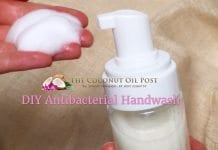


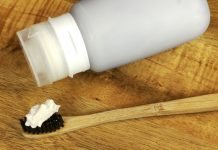

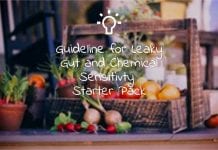
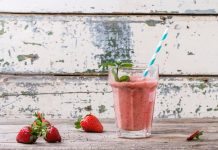




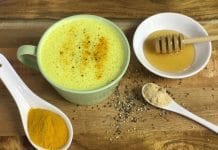
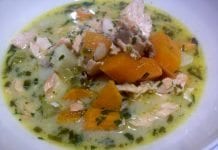















Hi & thank you for your posts. I am unable to eat any FODMAPS or Salicylates which leaves me with bananas as the only fruit my system can cope with & as for vegetables I can only eat white potatoes, carrot & zucchini (all must be peeled though) & green beans. All grains other than rice is out although I have found one brand of oats I can currently tolerate. No herbs, no spices… basically nothing with flavour. Now I have found that almonds & walnuts which have necessarily been an important part of my diet are no longer tolerated! I am totally at a loss as for what to eat for snacks or lunches. Dinner is always just a protein with the vegetables I can eat & flaxseed oil. Breakfast when I have it is porridge with the oats I can tolerate, lactose free milk & a banana. If I don’t eat breakfast then the banana becomes a snack during the day. For someone who has always eaten healthily & LOVES fruit & vegetables I am completely stuck & at times get very down about it. I am grateful that the rest of my life is wonderful or I can’t imagine how down I would get! My situation has become worse & worse no matter what I do…just when I think I have it all sorted I become intolerant of something else. Of course supplements are out of the question because they all contain things I can’t have. Ugh well there is my low down. Again thanks for the posts, I’m off to check out all of the links in them now. ?
Hi Oceana – sorry to hear that you are in a hard place at the moment. It can be very disheartening but it’s good to hear that you have some positives in your life and that you can be thankful for those. I wish there was a one size fit all solution to chemical sensitivities and gut disorders but unfortunately there isn’t. I hope you symptoms improve sooner than later. One thing I was always conscious of was making myself more sensitive. I would persevere with food challenges even in small amounts so as not to try and create tolerance rather than intolerance. Personally I’ve had success with many foods and only have a handful of foods now that I know I won’t eat ever again. I’ve also tried this approach with my daughter, which while she is still sensitive to some spices and herbs, she can manage to eat more than what she could. 1 big mistake I made way back at the beginning of this journey was believing that I was lactose intolerant when actually I was intolerant to the milk proteins. Once I realised this and stopped eating and drinking low lactose milk, my gut improved a lot. I’m not sure if you’ve been tested for dairy intolerance but if you do it’s worthwhile having a blood test for the proteins not just the lactose/sugar test. The other resource that I’ve found really helpful is https://healinghistamine.com/. Yasmina has a really different approach to chemical sensitive that you may or may not find interesting. Wishing you all the best with your health and wellness. 🙂